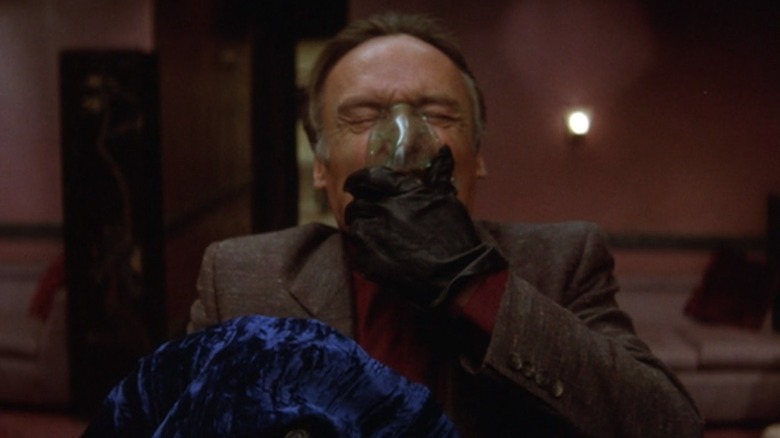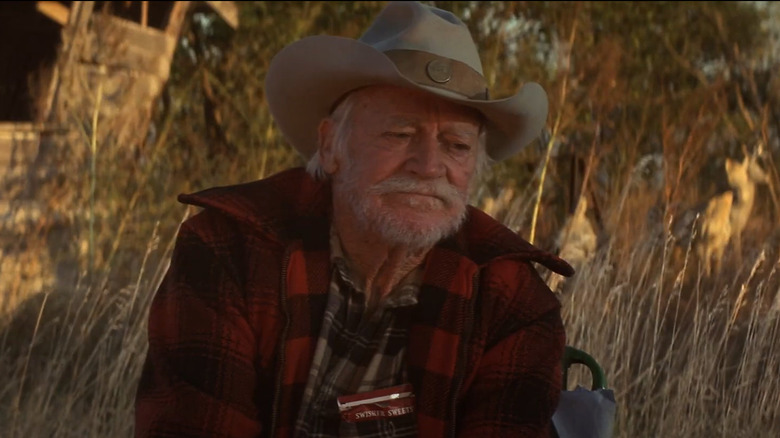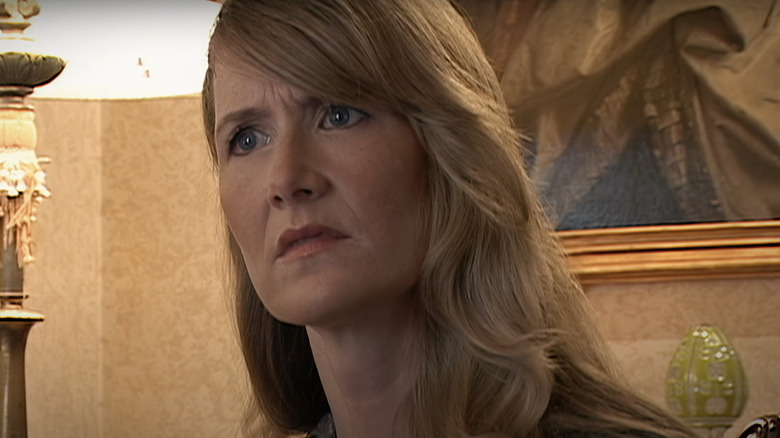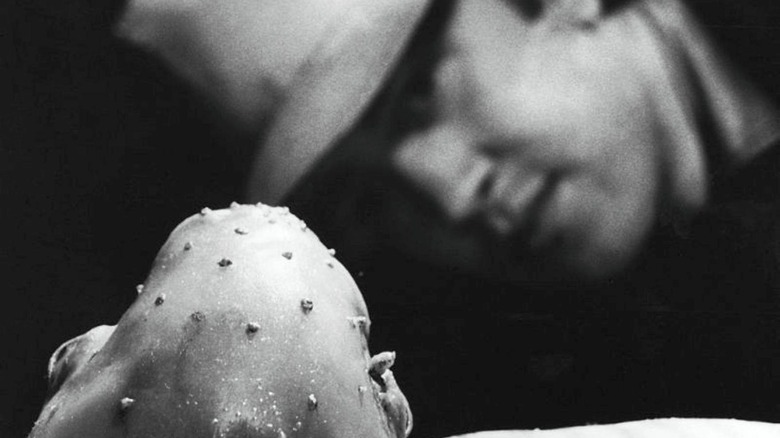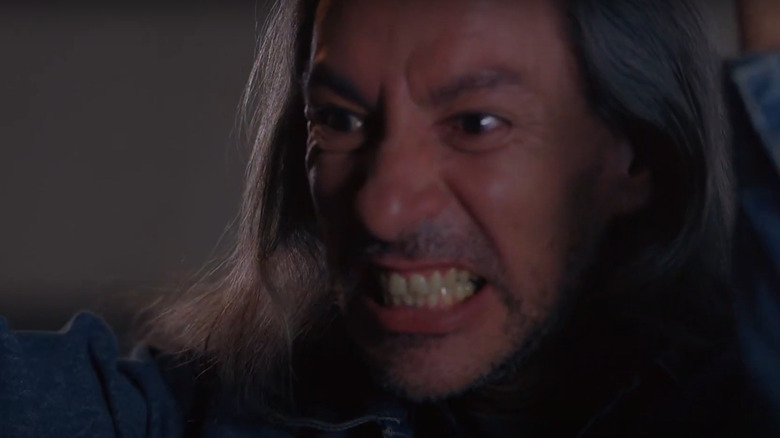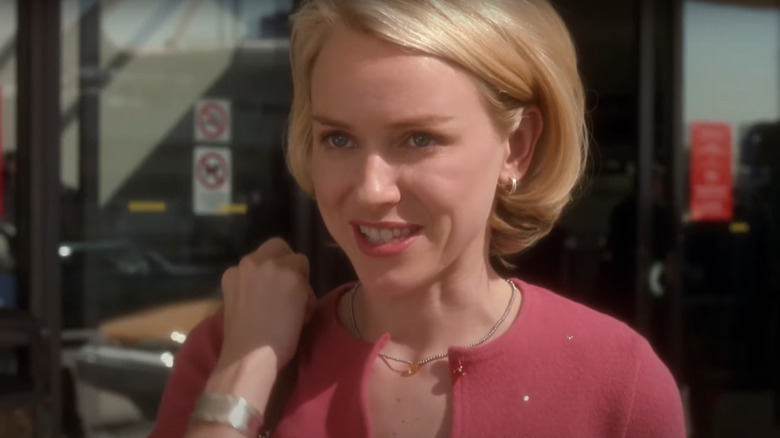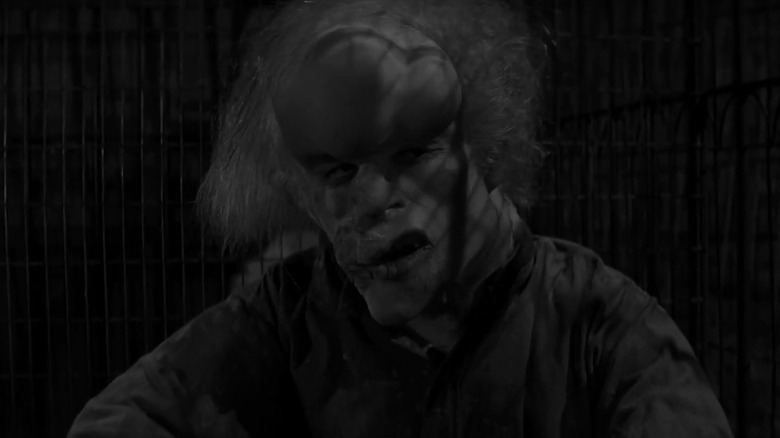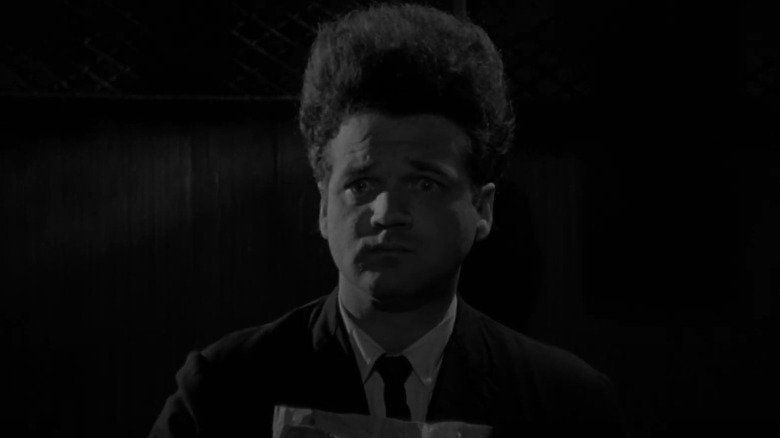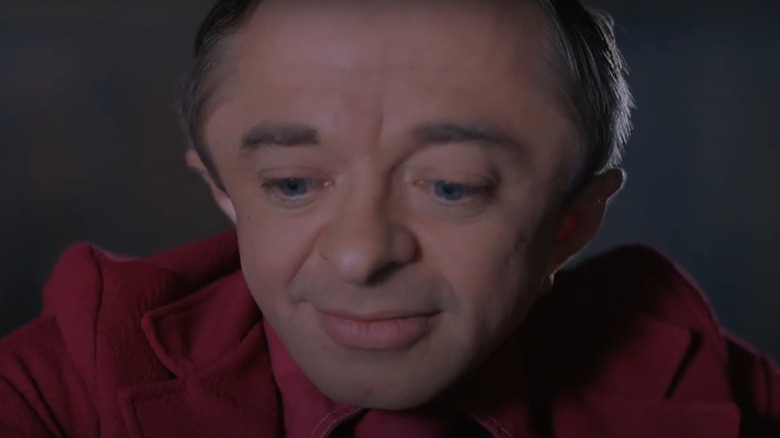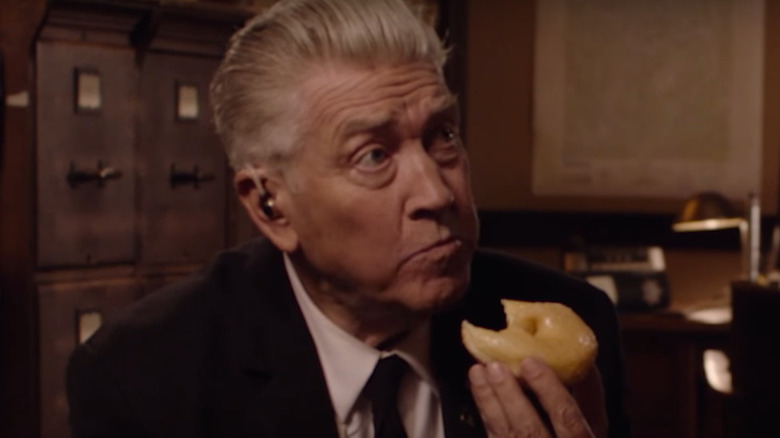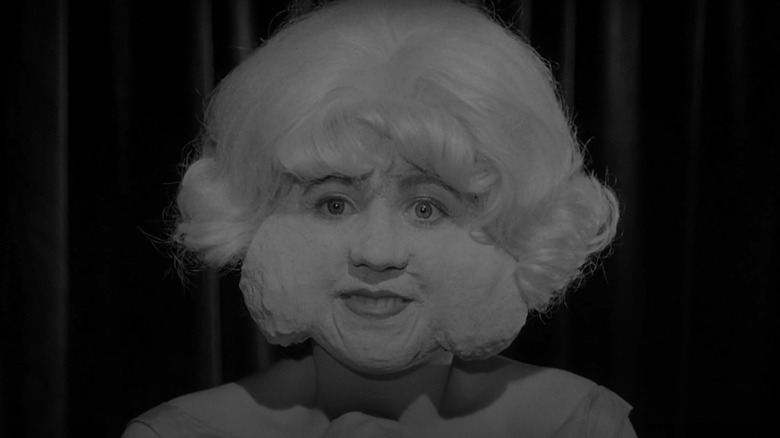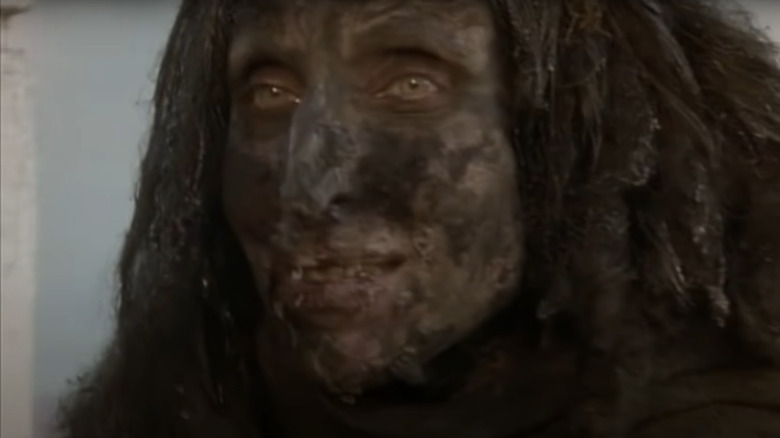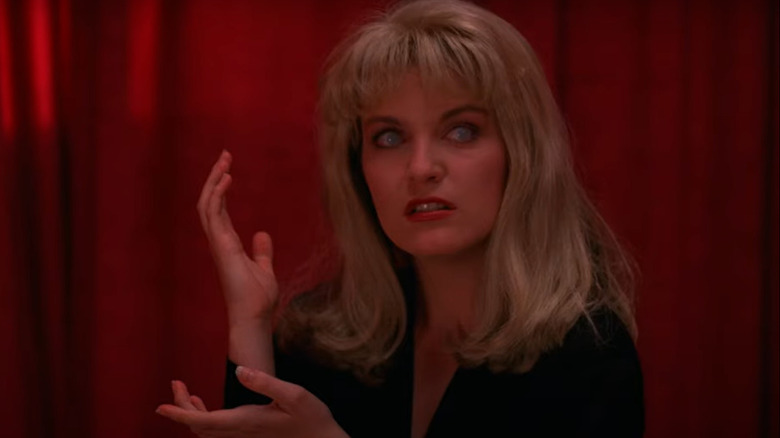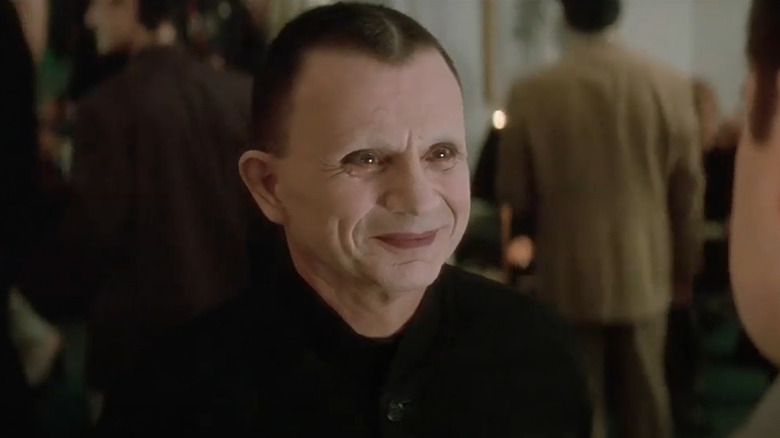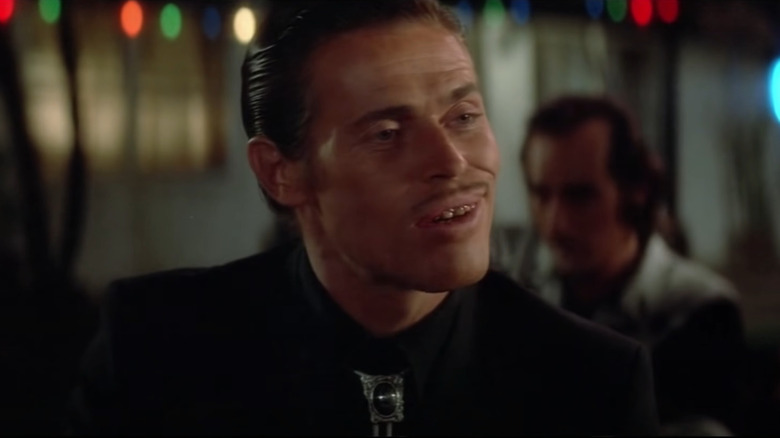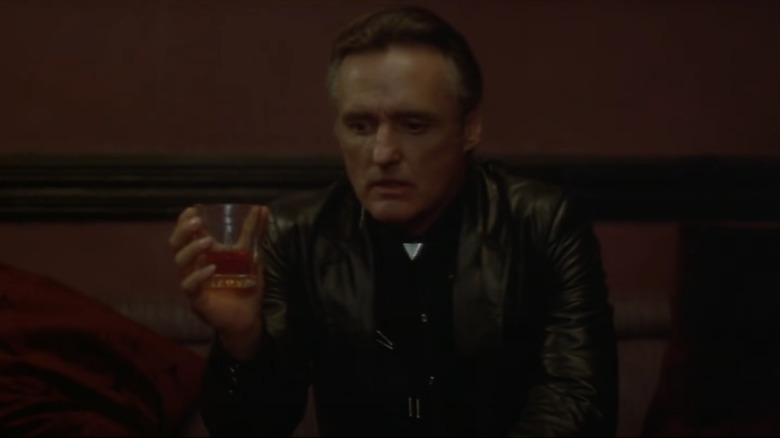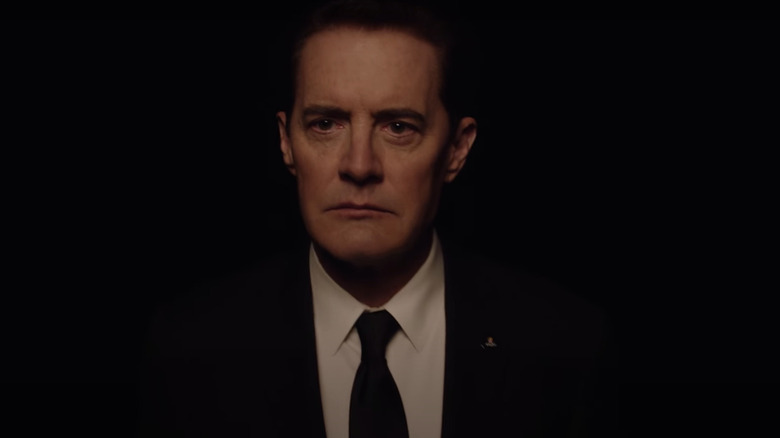The 16 Most Memorable David Lynch Characters Ever
David Lynch is, without a doubt, one of cinema's most important directors. Over the course of a career that spans more than forty years, Lynch has given us such classic films as "The Elephant Man," "Blue Velvet," "Mulholland Drive," and the beloved television series "Twin Peaks." While most of his films have never been box office hits, he's nonetheless garnered considerable industry love in the form of numerous award distinctions, including four Oscar nominations (as well as receiving an honorary award), nine Emmy Award nominations, and more.
While Lynch is generally lauded for his contributions to film and TV, his merits are often the source of heated debates and have been dismissed by many critics. This is due in large part to his incredibly unique style, which consists of surrealist elements, use of ambiguity, graphic intercourse and violence, and more bizarre traits that render his films difficult to digest by mainstream viewers. Then again, it's these same aspects that make his work so attractive to so many fans, many of whom don't mind some mystery and uncertainty in their movie-watching diet. Something else that Lynch is known for is the hyper-stylized characters that populate his films. From the shockingly vicious to the infectiously charming to the downright unexplainable, Lynch is a master of crafting characters that stay with us long after the credits roll. Here are the 16 most memorable David Lynch characters ever, ranked.
16. Alvin Straight (The Straight Story)
While Alvin Straight may lack the high-power eccentricity of most of David Lynch's other characters, he's so well realized by actor Richard Farnsworth that he demands inclusion on this list. Based on a true story, "The Straight Story" follows the elderly Alvin Straight who, upon hearing that his brother Lyle has suffered a stroke, decides to visit him. However, because his age and declining health make driving there impossible, Alvin embarks on the 240-mile trek to his brother's place on a riding lawnmower that's pulling a little trailer, much to the dismay of his loved ones.
Ok, so maybe Alvin does have a streak of peculiarity in him, but it's one that's driven by brotherly love, and not the usual Lynchian motifs like dual identities, head injuries, and demonic electricity. As Alvin makes his way to his brother's home, he has a bevy of wholesome interactions, like consoling a young pregnant woman who's run away from her family, has a heart-to-heart conversation with cyclists about the wisdom of aging, and honoring the roadkill he's eaten. While there are plenty of subtle Lynchian touches peppered throughout Alvin's adventure, it's a surprisingly tender film anchored by one of the more easily relatable of his characters, brought to life so thoughtfully and sincerely by Farnsworth. Because the film is G-rated, it's a great way to introduce the little ones to the world of Lynch without ruining their childhoods.
15. Nikki Grace / Sue Blue (Inland Empire)
"Inland Empire" is one of David Lynch's most challenging feature-length films. Clocking in at three hours, the film constantly blurs the lines between reality and dream, which means that its leading character (played by Laura Dern) is every bit as dense and layered as the film itself. Nikki Grace is an actress who just landed one of the leading roles in the upcoming film "On High in Blue Tomorrows," which is later revealed by the director to be a remake of a supposedly cursed German film called "47." During the production of "47," the two leading actors were killed, which has given it a bad reputation. Sounds pretty ominous, right? Because this is a David Lynch film, it's not simply that the production is cursed by ghosts, but is more likely plagued by rips in space, time, and identity.
As the movie's filming continues, Nikki begins to meld with the character she's playing named Sue Blue, as the events taking place in the film appear to be taking place in real life. Nikki then starts living out Sue's crazy life, which includes such depravity as prostitution, murder, and hanging out on Hollywood Boulevard, along with all sorts of other weird crap that's hard to describe in this article. Suffice to say, Nikki and Sue go on one hell of a journey into each other's lives.
14. The Baby (Eraserhead)
David Lynch has given us some pretty outré characters over the decades, but one of the most out-there is the deformed baby (although it's implied that it's not even human) from "Eraserhead." Born out of wedlock from Henry Spencer and his girlfriend Mary, the baby monstrosity plagues the couple with its constant wailing and habit of spitting up whatever food it's given. The baby becomes such a problem that Mary can't take it anymore and leaves Henry to take care of it by himself, which he's obviously reluctant to do.
However, under Henry's sole care, the baby develops breathing problems and starts growing horrendous sores across its face. In one of the more unsettling scenes in the film, Henry cuts off the bandages wrapped around the baby's body, revealing its internal organs kept intact by the bandages because of their lack of skin. Henry then stabs the baby to death, only to be immediately confronted with a vision of the baby's head now grown to an abnormally large size. That's pretty memorable for ANY character, right?
13. Killer Bob (Twin Peaks)
Killer Bob is one of the primary antagonists in the "Twin Peaks" series, but like most of David Lynch's characters, he's not merely a bad guy. Bob is less of a person and more of a malevolent otherworldly force representing everything evil that humans are capable of. He was hinted at early on in the show's first season and gradually made more and more appearances in his long-haired, denim-jacketed form.
However, that wasn't his only form, as Bob has possessed multiple figures associated with the town of Twin Peaks. He's been in possession of Leland Palmer (Laura Palmer's father) since he first encountered him when he was a child. In a disturbing revelation, it turned out that a Bob-possessed Leland had been sexually abusing his daughter for years and was the one who killed her. When Leland dies, Bob is free to possess others, eventually taking over Dale Cooper's doppelgänger, wherein he causes further pain and suffering to others.
12. Betty Elms / Diane Selwyn (Mulholland Drive)
Doppelgängers and dual identities are recurring themes in several of David Lynch's works, and 2001's enigmatic "Mulholland Drive" is one of them. The film centers around a character who spends much of the film as Betty Elms, only to suddenly and mysteriously become Diane Selwyn for the rest of it, with Naomi Watts playing both roles. At the beginning of "Mulholland Drive," the young and doe-eyed Betty arrives in Los Angeles to pursue her dreams of becoming an actress. She's staying at her aunt's apartment, who's out of town at the moment, but finds an amnesiac woman there who calls herself Rita. Betty, excited at the mystery presented before her, eagerly agrees to help Rita find out about her past. The trail leads to the apartment of someone named Diane Selwyn, but it's empty except for the corpse of an unnamed woman.
However, things get even more enigmatic when Betty wakes up as Diane Selwyn, living in her apartment. Diane is a failed actress who's fallen into a state of despair caused by the dissolution of her romantic relationship with Camilla Rhodes, who just happens to be a different version (or something) of Rita. Betty/Diane is a walking puzzle whose pieces are constantly being shifted around, but the character is also one of the most rewatchable, with new hints and clues emerging with every new viewing.
11. John Merrick (The Elephant Man)
Released in 1980, "The Elephant Man" is one of David Lynch's most critically acclaimed and financially successful films, and even received eight Academy Award nominations. Inspired by a true story, the film follows John Merrick (real name Joseph), who was born with a disease that severely deformed his appearance and resulted in a tragic life of ridicule in Victorian London.
John Hurt portrayed the eponymous character, charged with the daunting task of playing a complex, nuanced, and gentle Merrick through extensive makeup, and boy does he knock it out of the park. From his time as a freak show attraction to learning how to conduct himself in high society, the audience is constantly in awe of Merrick's lifelong battle to simply be accepted by those around him. Because of his condition, speaking coherently is a massive task for him, making his recitation of Psalm 23 all the more glorious. However, it's his grand declaration of his humanity in the face of a mob near the end of the film that's the real high point of the character, the apotheosis of his fight to maintain his dignity even when the world told him he had none.
10. Henry Spencer (Eraserhead)
David Lynch is known for working with a lot of the same cast and crew on multiple projects, a habit of his that goes all the way back to the beginning of his career. A frequent Lynch collaborator was the late Jack Nance, who played the incredibly odd main character of "Eraserhead" named Henry Spencer. Like many other characters on this list, Henry is typified by an idiosyncratic look, including a suit that's too small for him and a haircut that looks like he stuck a fork in an electrical outlet. (Side note: While we can't find any proof of this yet, we'd happily wager that he was the inspiration for Cosmo Kramer's iconic look.)
Throughout the film, Henry goes about his surreal life living alone in an apartment in an industrial wasteland, having bizarre dreams and visions, and raising a deformed child with his girlfriend, among many other strange routines. Rarely does Henry deviate from his intensely nervous and aloof demeanor, even with all of the outlandish and hallucinogenic occurrences happening around him.
9. The Man From Another Place (Twin Peaks)
Few characters are as symbolic of the weirdness of "Twin Peaks" than the Man From Another Place. Characterized by his diminutive size, crimson suit, spectral speech pattern, and haunting jazz dance, the Man From Another Place is perfectly emblematic of the idiosyncratic clash of nostalgia and the supernatural that's made "Twin Peaks" so addictive.
Played by Michael J. Anderson, the Man From Another Place made numerous appearances throughout "Twin Peaks," showing up in Dale Cooper's dreams and visions to offer him helpful-yet-cryptic clues on Laura Palmer's murder. Not much is known about the Man From Another Place and his motives, other than he resides in the Black Lodge — a spiritual dimension of suffering and malice — and that he was born out of Mike-possessed Philip Gerard's arm, which he cut off to rid himself of a mystical evil that had taken hold of him (this explanation makes a little more sense in "Twin Peaks: Fire Walk With Me," but only a little). While Anderson's performance was a thrilling part of the original series and film spinoff, the actor declined to reprise his role for "Twin Peaks: The Return," and was instead replaced by a glowing talking tree. The change is no less Lynchian, but Anderson was missed nonetheless.
8. Gordon Cole (Twin Peaks)
The "Twin Peaks" franchise is so rife with memorable characters that whole articles can be written on its cast alone, but even if this article is taking a more bird's eye view of David Lynch's oeuvre it still wouldn't be complete without a character that the master played himself, Gordon Cole.
A high-ranking agent at the FBI and Dale Cooper's superior, Gordon is a talented and brilliant agent, yet comes with his fair share of quirky traits. The most memorable of his is the constant and hilarious misunderstandings that arise from his hearing problem, as well as his habit of talking excessively loud to people not used to interacting with him. That, combined with his propensity to blurt out nonsequiturs, has resulted in some laugh-out-loud moments. While Gordon was a fun side character in the original "Twin Peaks" series and its feature film spinoff, he played a bigger role in the plot of "The Return," which also saw him with better hearing from updated hearing aids.
7. Lady in the Radiator (Eraserhead)
David Lynch made quite the splash with "Eraserhead," his feature film debut. In many ways, it's his weirdest and most surreal film and continues to inspire debate and discussion decades after it first hit cinemas in 1977. Part of the reason for the film's enduring legacy is the meaning behind the Lady in the Radiator, played by Laurel Near. The Lady in the Radiator is marked by her unusual presentation, which consists of unnaturally swollen cheeks and a vintage outfit from the 1950s. She first appears to Henry Spencer in a dream that takes place inside of his radiator: There's a small stage with a checkered floor that the Lady in the Radiator is standing on. Nostalgic carnival music begins to play, and the Lady does a strange dance. Grotesque little creatures rain from the ceiling upon the stage, and the Lady's dance continues even as she stomps on the nightmarish critters.
Another appearance of the Lady in the Radiator features her putting on a different show, this time singing the song "In Heaven," that's every bit as enigmatic as her inclusion in the film. We'll probably never know whether the Lady in the Radiator is a benevolent or malevolent force in "Eraserhead." However, one thing we can all agree on is that she's one hell of a performer.
6. Bum Behind The Diner (Mulholland Drive)
David Lynch isn't typically labeled a horror director, but there have been plenty of moments in his films that are every bit as terrifying as any fright flick. One particularly unnerving scene takes place in 2001's "Mulholland Drive," and features one of his most enduring characters (who also happens to be the one to have the least amount of screen time of any on this list). The scene in question takes place at a generic diner in L.A. where a man relates to another man about a bizarre dream he had that took place at that particular diner about a horrifying figure residing by a dumpster behind the establishment. Curious, the other man responds by convincing him to go out behind the diner to see what's there, so they head outside. As they slowly approach the fateful spot, the figure from the man's nightmare suddenly appears, causing him to faint on the spot.
The figure (played by "The Nun" actress Bonnie Aarons) is only on screen for a few seconds, but they are a terrifying few seconds. Not only is their appearance horrifying — ragged clothes, dirt-covered visage, eerie expression, etc. — it's the fact that a man's nightmare comes true right in front of him. Good thing David Lynch has never made a true horror film knowing of the terrors he's capable of producing ... we probably wouldn't survive such an experience.
5. Laura Palmer (Twin Peaks)
Laura Palmer is one of the more tragic and complex characters created by David Lynch. She's rarely seen during the television part of her story (although she was the central character in the film, "Twin Peaks: Fire Walk With Me"), yet she has a strong presence throughout the series and was the focal point of everything strange and mysterious in the titular town.
Laura was a seemingly model citizen, beloved by all who knew her. She was the Homecoming Queen at her high school, volunteered for Meals on Wheels, and came from a good family, which meant that her murder was a devastating blow to the community. However, as Agent Dale Cooper dug deeper into her background, it was revealed that Laura led a terrible secret life of drugs, prostitution, and sexual abuse. Her story is made all the more grim considering that there were otherworldly forces at work that had set out to corrupt someone so innocent, forces beyond her control.
4. The Mystery Man (Lost Highway)
The Mystery Man from "Lost Highway" is one of the creepiest characters in David Lynch's body of work, and that's saying something. Played by Robert Blake, the Mystery Man has an extremely unsettling appearance that includes unusually pale skin, jet black hair, no eyebrows, and a demon smile that's anything but reassuring. He looks like he has a vacation home deep in the Uncanny Valley, but it's not just his appearance that makes him so unforgettable — it's the way he haunts the film that's enough to give audiences years worth of nightmares.
One of the Mystery Man's more notable scenes in "Lost Highway" is when he makes his first full appearance at a party to approach Fred Mason (Bill Pullman), who recently had a nightmare about him. The Mystery Man tells Fred that he's at his house right now, then hands him a phone and tells him to call his home. Fred calls, and the Mystery Man answers despite him standing right in front of Fred at that exact moment.
3. Bobby Peru (Wild at Heart)
Willem Dafoe has played some kooky characters over the years, and his Bobby Peru is no exception. With the charisma of a cobra, Bobby was the standout in a film already filled to the brim with absurd characters.
Bobby first meets the young couple on the run — Sailor and Lula — in Big Tuna, Texas. Strapped for cash, Sailor decides to come along with Bobby to rob a small store in town to make some money. However, while Sailor is out before the stickup, Bobby gleefully sexually assaults Lula in their motel room, revealing how much of a depraved monster he really is. Later on, during the robbery, Bobby needlessly shoots the store's two clerks and reveals to Sailor that he was contracted to murder him, and chases him outside only to be confronted by a police officer who opens fire on him. Bobby is shot several times, but his real demise is when he falls on his own gun, blowing his head off.
2. Frank Booth (Blue Velvet)
If Dennis Hopper's portrayal of Frank Booth hasn't gone down in cinema history as one of the great screen villains, it damn well should. Basically representing everything evil about human beings, Frank is the head crook of Lumberton, North Carolina. Drug dealing, pimping, kidnapping, murder, near-constant swearing ... nothing was too deviant or vile for Frank. His mania for local singer Dorothy Vallens drove him to hold her son and husband hostage so that he could keep Dorothy as his plaything, subjecting her to all manner of perverse fantasies.
Less of a person and more of a starving wolverine, Frank's unpredictability is what makes him such an iconic figure in David Lynch's work. One moment he'll be moved to tears from a lip-synced performance of Roy Orbison's "In Dreams," and the next he'll be sucking in a mysterious gas and applying lipstick to make out with his victim. Because "Blue Velvet" takes place in a picture-perfect town taken right out of a sweetly nostalgic dream, Frank Booth's presence is all the more shocking and perverse.
1. Dale Cooper / Dougie Jones (Twin Peaks)
While it may seem like a cheat to put Dale Cooper (along with his alter ego, Dougie Jones), at the top of this list, considering he's the character to appear the most in David Lynch's body of work, Cooper's presence would still remain a fixture in popular culture even if he'd only appeared in a single scene.
Perfectly portrayed by Kyle MacLachlan, this Special Agent for the FBI guided viewers into the strange goings-on in the sleepy Washington town. However, ditching the stern demeanor and by-the-book personality of other fictional law enforcement figures, Cooper had a polite, enthusiastic, and quirky charm that has made him so beloved among fans. His considerable agency experience and willingness to jump into danger were belied by his fondness for cherry pie, black coffee, and the great outdoors. Lynch upped Cooper's adorability factor in "Twin Peaks: The Return," when he brought the character back in the form of Dougie Jones, who spent much of the show in a baby-like state and gets tangled up with the criminal element in Las Vegas.
